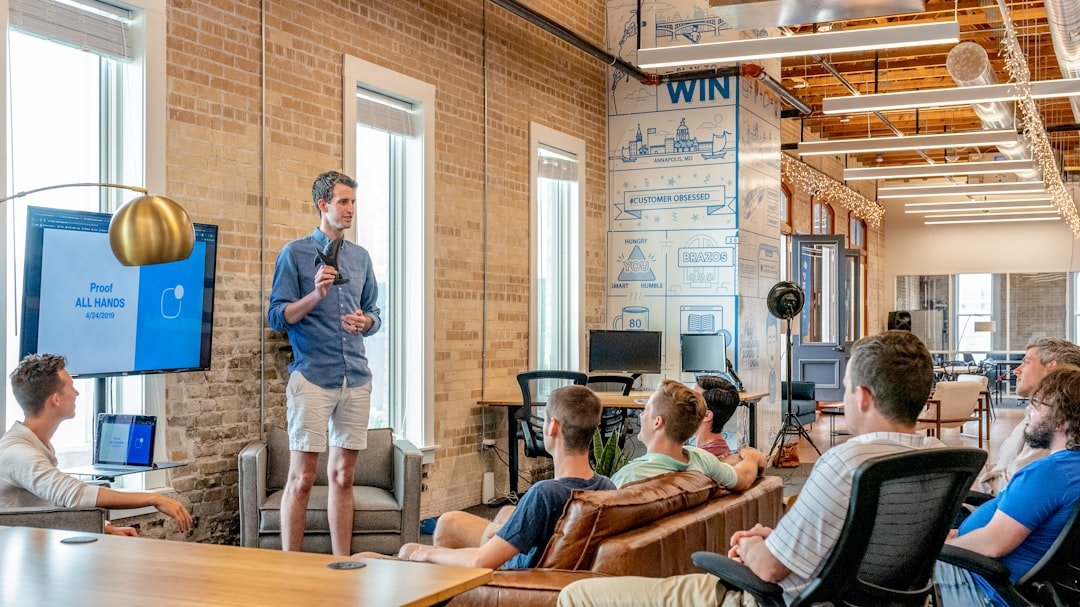
Breaking Down New York State’s Loan Forgiveness Programs for Doctors: Your Guide to Financial Relief
Student loan debt is a significant burden for many doctors, who often graduate with hundreds of thousands of dollars in debt. To help alleviate this financial strain, there are various loan forgiveness programs available specifically for doctors. These programs aim to incentivize doctors to work in underserved areas or in public service by offering loan forgiveness in exchange for a certain number of years of service. Understanding these programs and their eligibility criteria is crucial for doctors looking to manage their student debt effectively.
Key Takeaways
- Loan forgiveness programs are available for doctors in New York State.
- Federal and state programs exist for both primary care physicians and specialists.
- Programs also exist for doctors working in underserved areas and public service.
- Eligibility criteria vary by program and may include factors such as location and specialty.
- The application process for loan forgiveness programs can be complex, but it is worth exploring to reduce debt burden.
Federal Loan Forgiveness Programs for Doctors in New York State
In New York State, there are several federal loan forgiveness programs available for doctors. One such program is the Public Service Loan Forgiveness (PSLF) program, which forgives the remaining balance on federal Direct Loans after 120 qualifying payments while working full-time for a qualifying employer. Doctors who work in public service, such as at a nonprofit hospital or community health center, may be eligible for this program.
Another federal loan forgiveness program available to doctors in New York State is the National Health Service Corps (NHSC) Loan Repayment Program. This program provides loan repayment assistance to primary care medical, dental, and mental health clinicians who agree to work in Health Professional Shortage Areas (HPSAs) designated by the NHSC. Doctors who commit to working full-time at an NHSC-approved site for at least two years can receive up to $50,000 towards their student loans.
While federal loan forgiveness programs can provide significant relief for doctors with student debt, there are also some drawbacks to consider. For example, the PSLF program requires doctors to make 120 qualifying payments before they can receive forgiveness, which means it can take up to 10 years to become eligible. Additionally, there have been concerns about the complexity and uncertainty surrounding the PSLF program, with reports of many borrowers being denied forgiveness due to technicalities.
New York State Loan Forgiveness Programs for Doctors
In addition to federal loan forgiveness programs, the state of New York also offers its own loan forgiveness programs for doctors. One such program is the Doctors Across New York (DANY) Physician Loan Repayment Program, which provides up to $150,000 in loan repayment assistance to doctors who agree to practice in underserved areas of the state. Eligible doctors must commit to working full-time for at least five years in a designated underserved area.
Another state loan forgiveness program available to doctors in New York is the New York State Young Farmers Loan Forgiveness Incentive Program. While this program is not specific to doctors, it can be beneficial for those who have pursued a career in agricultural medicine or rural healthcare. The program provides up to $50,000 in loan forgiveness to individuals who have obtained an undergraduate degree and have committed to operating a farm in New York State on a full-time basis for at least five years.
State loan forgiveness programs can offer additional opportunities for doctors to manage their student debt. However, it is important to carefully consider the eligibility criteria and benefits of each program before applying. Some state programs may have specific requirements or limitations that may not align with a doctor’s career goals or personal circumstances.
Loan Forgiveness Programs for Primary Care Physicians
| Program Name | Eligibility Criteria | Loan Amount | Service Commitment |
|---|---|---|---|
| National Health Service Corps | Primary care physicians serving in Health Professional Shortage Areas | Up to 50,000 | 2 years |
| Public Service Loan Forgiveness | Physicians working for a non-profit or government organization | Up to full loan amount | 10 years |
| State Loan Repayment Program | Primary care physicians serving in designated shortage areas within the state | Varies by state | 2-4 years |
Loan forgiveness programs specifically designed for primary care physicians can provide targeted support for those working in this field. One such program is the Primary Care Service Corps Loan Forgiveness Program, which offers up to $120,000 in loan forgiveness to primary care physicians who commit to working in underserved areas of New York State for at least five years. This program aims to address the shortage of primary care providers in these areas by incentivizing doctors to practice there.
Another program available to primary care physicians is the New York State Physician Loan Repayment Program (PLRP). This program provides up to $150,000 in loan repayment assistance to primary care physicians who agree to practice in designated Health Professional Shortage Areas (HPSAs) or in a state correctional facility. Eligible physicians must commit to working full-time for at least five years.
While loan forgiveness programs for primary care physicians can provide significant financial relief, there are also some drawbacks to consider. For example, these programs often require doctors to commit to working in underserved areas for a certain number of years, which may limit their career options or personal preferences. Additionally, the availability of funding for these programs may be limited, and there may be a competitive application process.
Loan Forgiveness Programs for Specialists
Specialists, such as surgeons or radiologists, may have different loan forgiveness options compared to primary care physicians. One such program is the New York State Physician Loan Repayment Program (PLRP) for Specialists. This program provides up to $150,000 in loan repayment assistance to specialists who agree to practice in designated Health Professional Shortage Areas (HPSAs) or in a state correctional facility. Eligible specialists must commit to working full-time for at least five years.
Another program available to specialists is the New York State Doctors Across New York (DANY) Physician Loan Repayment Program. This program provides up to $150,000 in loan repayment assistance to specialists who agree to practice in underserved areas of the state. Eligible specialists must commit to working full-time for at least five years.
While loan forgiveness programs for specialists can offer significant financial relief, there are also some drawbacks to consider. Specialists may have limited options for practicing in underserved areas, as these areas often have a greater need for primary care providers. Additionally, the availability of funding for these programs may be limited, and there may be a competitive application process.
Loan Forgiveness Programs for Doctors in Underserved Areas
Loan forgiveness programs specifically designed for doctors who work in underserved areas aim to address the shortage of healthcare providers in these areas. One such program is the New York State Doctors Across New York (DANY) Physician Loan Repayment Program. This program provides up to $150,000 in loan repayment assistance to doctors who agree to practice in designated underserved areas of the state. Eligible doctors must commit to working full-time for at least five years.
Another program available to doctors in underserved areas is the National Health Service Corps (NHSC) Loan Repayment Program. This program provides loan repayment assistance to primary care medical, dental, and mental health clinicians who agree to work in Health Professional Shortage Areas (HPSAs) designated by the NHSC. Doctors who commit to working full-time at an NHSC-approved site for at least two years can receive up to $50,000 towards their student loans.
While loan forgiveness programs for doctors in underserved areas can provide significant financial relief, there are also some drawbacks to consider. Doctors may have limited options for practicing in underserved areas, as these areas often have fewer resources and amenities compared to urban or suburban areas. Additionally, the availability of funding for these programs may be limited, and there may be a competitive application process.
Loan Forgiveness Programs for Doctors in Public Service
Loan forgiveness programs for doctors who work in public service aim to incentivize doctors to serve in government or nonprofit organizations. One such program is the Public Service Loan Forgiveness (PSLF) program, which forgives the remaining balance on federal Direct Loans after 120 qualifying payments while working full-time for a qualifying employer. Doctors who work in public service, such as at a nonprofit hospital or community health center, may be eligible for this program.
Another program available to doctors in public service is the National Health Service Corps (NHSC) Loan Repayment Program. This program provides loan repayment assistance to primary care medical, dental, and mental health clinicians who agree to work in Health Professional Shortage Areas (HPSAs) designated by the NHSC. Doctors who commit to working full-time at an NHSC-approved site for at least two years can receive up to $50,000 towards their student loans.
While loan forgiveness programs for doctors in public service can provide significant financial relief, there are also some drawbacks to consider. Doctors may have limited options for working in public service, as these positions may be competitive or have specific requirements. Additionally, the availability of funding for these programs may be limited, and there may be a competitive application process.
Eligibility Criteria for Loan Forgiveness Programs for Doctors
While the eligibility criteria for loan forgiveness programs for doctors can vary depending on the program, there are some common requirements that doctors should be aware of. Generally, doctors must have completed their medical education and training from an accredited institution and hold a valid medical license in the state where they plan to practice. They must also be willing to commit to a certain number of years of service in a qualifying area or organization.
Additional eligibility criteria may include specific requirements related to the type of medical practice or specialty. For example, some programs may prioritize primary care physicians or specialists in certain fields. Doctors may also need to demonstrate financial need or meet certain income thresholds to qualify for certain programs.
It is important for doctors to carefully review the eligibility criteria for each program they are interested in and ensure that they meet all the requirements before applying. Failing to meet the eligibility criteria can result in a denied application and a missed opportunity for loan forgiveness.
Application Process for Loan Forgiveness Programs for Doctors
The application process for loan forgiveness programs for doctors can vary depending on the program. Generally, doctors will need to gather documentation related to their medical education, training, licensure, and employment history. They may also need to provide proof of their student loan debt and income.
Deadlines for applications can also vary depending on the program. Some programs may have specific application periods or rolling deadlines, while others may have annual or biannual application cycles. It is important for doctors to carefully review the application requirements and deadlines for each program they are interested in to ensure they submit their application on time.
To increase the chances of a successful application, doctors should ensure that they provide all the required documentation and complete the application accurately and thoroughly. It may be helpful to seek guidance from a financial advisor or loan forgiveness program specialist to navigate the application process effectively.
Making the Most of Loan Forgiveness Programs for Doctors in New York State
Loan forgiveness programs can provide significant relief for doctors burdened by student loan debt. In New York State, there are various federal and state loan forgiveness programs available specifically for doctors. These programs offer opportunities for loan forgiveness in exchange for a certain number of years of service in underserved areas or in public service.
While these programs can be beneficial, it is important for doctors to carefully consider the eligibility criteria and benefits before applying. Each program may have specific requirements or limitations that may not align with a doctor’s career goals or personal circumstances. By understanding the available loan forgiveness programs and their eligibility criteria, doctors can make informed decisions about managing their student debt effectively.
If you’re a doctor practicing in New York State and looking for loan forgiveness programs, you’ll definitely want to check out this informative article on Wave Magnets. They have compiled a comprehensive list of loan forgiveness programs specifically tailored for doctors in New York State. From the New York State Loan Repayment Program to the Doctors Across New York Program, this article provides valuable insights and resources to help you navigate through the various options available. Don’t miss out on this opportunity to alleviate your student loan burden. Read the article here: https://wavemagnets.com/sample-page/.
FAQs
What are New York State loan forgiveness programs for doctors?
New York State loan forgiveness programs for doctors are initiatives that aim to help medical professionals pay off their student loans in exchange for working in underserved areas or in high-need specialties.
Who is eligible for New York State loan forgiveness programs for doctors?
Eligibility for New York State loan forgiveness programs for doctors varies depending on the specific program. Generally, medical professionals who work in underserved areas or in high-need specialties, such as primary care, psychiatry, and dentistry, may be eligible.
What types of loans are eligible for forgiveness?
The types of loans that may be eligible for forgiveness under New York State loan forgiveness programs for doctors include federal and private student loans, as well as loans from state-based programs.
How much loan forgiveness can doctors receive?
The amount of loan forgiveness that doctors can receive under New York State loan forgiveness programs varies depending on the specific program. Some programs offer up to $150,000 in loan forgiveness over a certain period of time.
What are the requirements for participating in New York State loan forgiveness programs for doctors?
The requirements for participating in New York State loan forgiveness programs for doctors vary depending on the specific program. Generally, medical professionals must commit to working in an underserved area or in a high-need specialty for a certain period of time.
How can doctors apply for New York State loan forgiveness programs?
Doctors can apply for New York State loan forgiveness programs by visiting the New York State Department of Health website and reviewing the eligibility requirements and application process for each program.


















